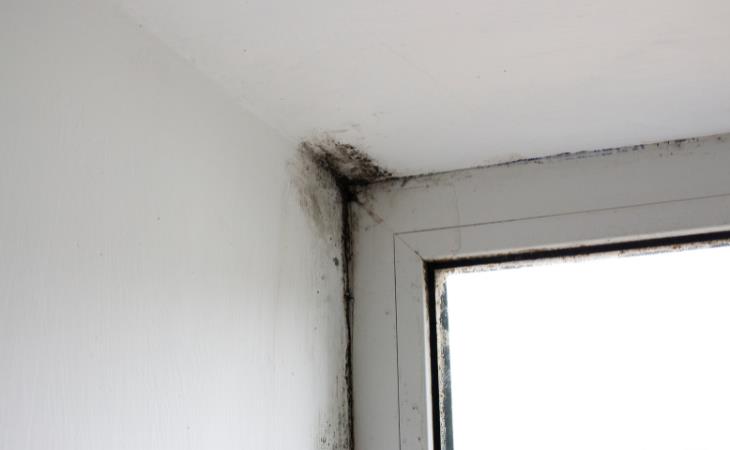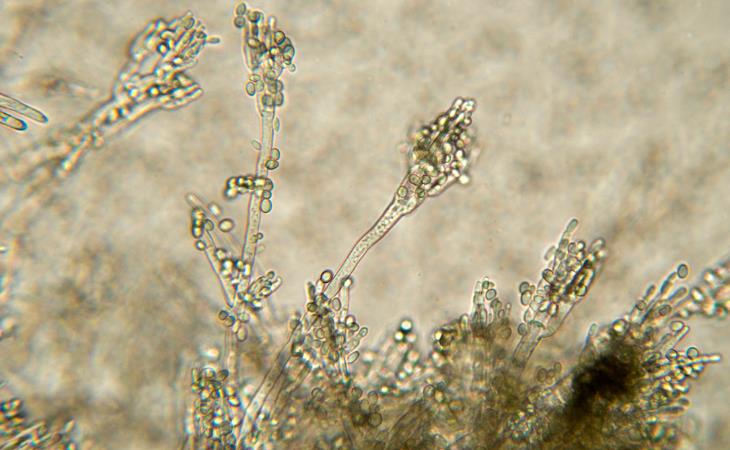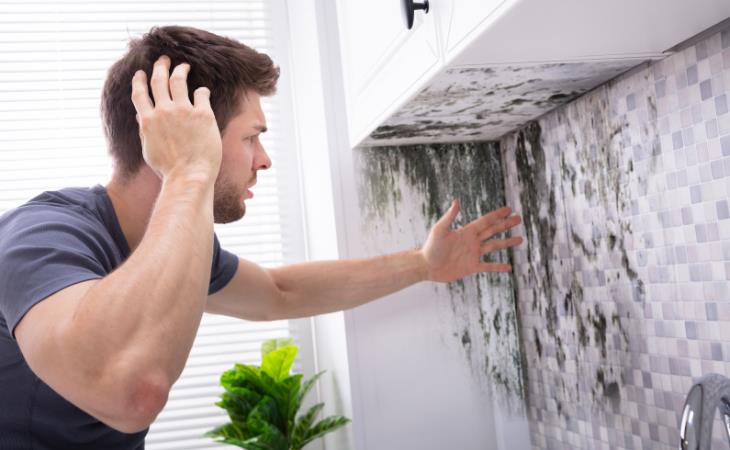


Aspergillus, a common indoor mold, has several species that thrive in bathroom environments, near water leaks, or on shower walls. It appears in large patches with a short, fuzzy texture and colors of black and gray or white and yellow. Those with mold allergies or asthma are especially susceptible to its effects.
Health experts warn that exposure to this mold type can cause severe asthmatic symptoms, particularly in people who are susceptible to it. In particular, the strain Aspergillus niger, which is sometimes found in bathrooms, poses an increased risk. Immunocompromised people who inhale its spores may develop aspergillosis, a potentially fatal respiratory condition. Furthermore, dogs may have allergic reactions or develop aspergillosis.

Often confused with black mold because of its dark, typically black, appearance, ulocladium is a common type of household mold. It thrives on various surfaces, including wood, drywall, wallpaper, and fabrics that have been exposed to water from sources like leaky pipes, high humidity, or chronic bathroom condensation.
The presence of ulocladium can lead to both minor and potentially significant health issues. As an allergenic mold, it may trigger symptoms such as itchy eyes, sneezing, congestion, and headaches, particularly in individuals with pre-existing allergies or asthma. Those with weakened immune systems are particularly at risk.
Like all molds, damp and humid environments serve as ideal breeding grounds for cladosporium. What sets this mold apart is its preference for organic. Textiles such as carpets, wallpapers, painted surfaces, and paper are its favored habitats.
Cladosporium comprises hundreds of species, ranging from benign nuisances to highly hazardous varieties. Unfortunately, distinguishing between them requires professional testing of the affected area.
This mold can trigger allergies in susceptible individuals, especially children and the elderly, as well as those with impaired immune systems. Symptoms may range from mild, such as sneezing and watery eyes, to more severe manifestations, like serious asthma attacks and fungal sinus infections. In extreme cases, managing asthma may become difficult, and can lead to pulmonary edema or, in rare instances, emphysema.
There is a high chance of finding this mold on bathroom walls, ceilings, wallpaper, wood trim, and cloth curtains for the shower or windows. Its preferred breeding grounds include areas adjacent to plumbing leaks or in exceptionally humid bathrooms. As trichoderma matures through its life cycle, it transforms from transparent to yellow and white, eventually maturing into shades of gray and green.
While exposure to trichoderma typically doesn't affect healthy individuals, it can trigger symptoms such as sneezing, coughing, and a sore throat in those with asthma or allergic sensitivities. Moreover, people with compromised immune systems face a heightened risk from Trichoderma as it shows resistance to antifungal treatments.

Given the potential health dangers associated with toxic mold exposure, it's important to seek professional help if you suspect the presence of dangerous mold in your home. The first step is to hire professionals to conduct a comprehensive mold inspection of your home. This includes a thorough investigation for any signs of water damage or mold growth on household surfaces, as well as an air quality assessment to detect airborne mold spores. In most cases, the full inspection process takes an hour or less.
Related: Choose the SAFE Way to Remove Mold From Your Home
The samples will then be sent to an environmental testing laboratory to assess whether there are any dangerous mold species in your home. If necessary, contact a mold remediation professional to remove the dangerous mold from your house and identify any residual sources of water damage.
Once the mold has been removed, a clearance air test can be performed to check that your home's mold levels are safe.